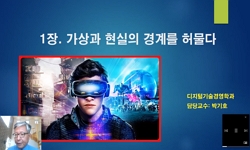Study Design: Prospective comparative pre–post study. Purpose: To evaluate the effects of game-based virtual reality (VR) training program for trunk postural control and balance in patients with spinal cord injury (SCI) and to assess the results acc...
http://chineseinput.net/에서 pinyin(병음)방식으로 중국어를 변환할 수 있습니다.
변환된 중국어를 복사하여 사용하시면 됩니다.
- 中文 을 입력하시려면 zhongwen을 입력하시고 space를누르시면됩니다.
- 北京 을 입력하시려면 beijing을 입력하시고 space를 누르시면 됩니다.


Role of Virtual Reality in Balance Training in Patients with Spinal Cord Injury: A Prospective Comparative Pre-Post Study
한글로보기https://www.riss.kr/link?id=A106557453
-
저자
Madhusree Sengupta (National Institute of Mental Health and Neurosciences) ; Anupam Gupta (National Institute of Mental Health and Neurosciences) ; Meeka Khanna (National Institute of Mental Health and Neurosciences) ; U. K. Rashmi Krishnan (National Institute of Mental Health and Neurosciences) ; Dhritiman Chakrabarti (National Institute of Mental Health and Neurosciences)

- 발행기관
- 학술지명
- 권호사항
-
발행연도
2020
-
작성언어
English
- 주제어
-
등재정보
KCI등재,SCOPUS,ESCI
-
자료형태
학술저널
-
수록면
51-58(8쪽)
-
KCI 피인용횟수
0
- 제공처
-
0
상세조회 -
0
다운로드
부가정보
다국어 초록 (Multilingual Abstract)
Study Design: Prospective comparative pre–post study.
Purpose: To evaluate the effects of game-based virtual reality (VR) training program for trunk postural control and balance in patients with spinal cord injury (SCI) and to assess the results according to the motor completeness (severity) of lesions using the American Spinal Injury Association Impairment Scale (AIS).
Overview of Literature: Training with VR based gaming has a role to play in improving balance in patients with SCI.
Methods: Patients with SCI (traumatic and non-traumatic) for <6 months were included in this hospital-based study. Participants were divided into two groups: experimental group (EG) consisting 21 patients, and control group (CG) consisting 12. Both groups underwent the conventional rehabilitation program. An additional training with semi-immersive VR therapy was conducted 5 days a week for 3 weeks in the EG with the focus on balance rehabilitation using the “Rhetoric.” The outcome measures were the Berg Balance Scale (BBS), balance section of the Tinetti Performance-Oriented Mobility Assessment (POMA-B), and Functional Reach Score (FRS).
Results: Both groups consisted of young participants (mean age, 28 and 30.5 years, respectively) and predominantly men (>80%). One-third of them had tetraplegia and two-third had paraplegia. Between-group analyses showed no statistically significant differences in the main effects between groups (p-value: BBS, 0.396; POMA-B, 0.238; FRS, 0.294), suggesting that the EG group did not show significant improvement in the trunk and posture at the end of training sessions than the CG group. Similarly, no significant difference was observed according to the severity (completeness) of SCI in the between-group analyses using the AIS (A/B vs. C/D).
Conclusions: VR is an adjunctive therapy for balance rehabilitation in patients with SCI.
참고문헌 (Reference)
1 Cho KH, "Virtual-reality balance training with a video-game system improves dynamic balance in chronic stroke patients" 228 : 69-74, 2012
2 Lee Y, "Virtual reality training with three-dimensional video games improves postural balance and lower extremity strength in community-dwelling older adults" 25 : 621-627, 2017
3 Mao Y, "Virtual reality training improves balance function" 9 : 1628-1634, 2014
4 Laver KE, "Virtual reality for stroke rehabilitation" 11 : CD008349-, 2017
5 Kizony R, "Video-capture virtual reality system for patients with paraplegic spinal cord injury" 42 : 595-608, 2005
6 An S, "Validity of the performance-oriented mobility assessment in predicting fall of stroke survivors : a retrospective cohort study" 233 : 79-87, 2014
7 Bjerkefors A, "Trunk muscle activation in a person with clinically complete thoracic spinal cord injury" 41 : 390-392, 2009
8 Wall T, "The effects of the Nintendo Wii Fit on gait, balance, and quality of life in individuals with incomplete spinal cord injury" 38 : 777-783, 2015
9 Downs S, "The Berg Balance Scale has high intra-and inter-rater reliability but absolute reliability varies across the scale : a systematic review" 59 : 93-99, 2013
10 Khurana M, "Study on the effectiveness of virtual reality game-based training on balance and functional performance in individuals with paraplegia" 23 : 263-270, 2017
1 Cho KH, "Virtual-reality balance training with a video-game system improves dynamic balance in chronic stroke patients" 228 : 69-74, 2012
2 Lee Y, "Virtual reality training with three-dimensional video games improves postural balance and lower extremity strength in community-dwelling older adults" 25 : 621-627, 2017
3 Mao Y, "Virtual reality training improves balance function" 9 : 1628-1634, 2014
4 Laver KE, "Virtual reality for stroke rehabilitation" 11 : CD008349-, 2017
5 Kizony R, "Video-capture virtual reality system for patients with paraplegic spinal cord injury" 42 : 595-608, 2005
6 An S, "Validity of the performance-oriented mobility assessment in predicting fall of stroke survivors : a retrospective cohort study" 233 : 79-87, 2014
7 Bjerkefors A, "Trunk muscle activation in a person with clinically complete thoracic spinal cord injury" 41 : 390-392, 2009
8 Wall T, "The effects of the Nintendo Wii Fit on gait, balance, and quality of life in individuals with incomplete spinal cord injury" 38 : 777-783, 2015
9 Downs S, "The Berg Balance Scale has high intra-and inter-rater reliability but absolute reliability varies across the scale : a systematic review" 59 : 93-99, 2013
10 Khurana M, "Study on the effectiveness of virtual reality game-based training on balance and functional performance in individuals with paraplegia" 23 : 263-270, 2017
11 Lemay JF, "Standing balance assessment in ASIA D paraplegic and tetraplegic participants : concurrent validity of the Berg Balance Scale" 48 : 245-250, 2010
12 Adamovich SV, "Sensorimotor training in virtual reality : a review" 25 : 29-44, 2009
13 Field-Fote EC, "Seated reach distance and trunk excursion accurately reflect dynamic postural control in individuals with motor-incomplete spinal cord injury" 48 : 745-749, 2010
14 Villiger M, "Relationship between structural brainstem and brain plasticity and lower-limb training in spinal cord injury : a longitudinal pilot study" 9 : 254-, 2015
15 Awad A, "Preserved somatosensory conduction in a patient with complete cervical spinal cord injury" 47 : 426-431, 2015
16 Villiger M, "Home-based virtual reality-augmented training improves lower limb muscle strength, balance, and functional mobility following chronic incomplete spinal cord injury" 8 : 635-, 2017
17 Betker AL, "Game-based exercises for dynamic short-sitting balance rehabilitation of people with chronic spinal cord and traumatic brain injuries" 87 : 1389-1398, 2007
18 Tak S, "Game-Based Virtual Reality Training Improves Sitting Balance after Spinal Cord Injury: A Single-Blinded, Randomized Controlled Trial" International Scientific Information, Inc. 56 : 53-59, 2015
19 이가은, "Factors that Influence Quiet Standing Balance of Patients with Incomplete Cervical Spinal Cord Injuries" 대한재활의학회 36 (36): 530-537, 2012
20 Somya Prasad, "Efficacy of Virtual Reality in Upper Limb Rehabilitation in Patients with Spinal Cord Injury: A Pilot Randomized Controlled Trial" 대한척추외과학회 12 (12): 927-934, 2018
21 Thomas JS, "Effects of real-world versus virtual environments on joint excursions in fullbody reaching tasks" 4 : 2100608-, 2016
22 Casuso-Holgado MJ, "Effectiveness of virtual reality training for balance and gait rehabilitation in people with multiple sclerosis : a systematic review and metaanalysis" 32 : 1220-1234, 2018
23 Dimbwadyo-Terrer I, "Effectiveness of the virtual reality system Toyra on upper limb function in people with tetraplegia : a pilot randomized clinical trial" 2016 : 6397828-, 2016
24 Roberts TT, "Classifications in brief : American Spinal Injury Association(ASIA)impairment scale" 475 : 1499-1504, 2017
25 Menon N, "Ambulation following spinal cord injury and its correlates" 18 : 167-170, 2015
26 Basso Moro S, "A semiimmersive virtual reality incremental swing balance task activates prefrontal cortex : a functional nearinfrared spectroscopy study" 85 (85): 451-460, 2014
동일학술지(권/호) 다른 논문
-
- 대한척추외과학회
- Mahender Avinash
- 2020
- KCI등재,SCOPUS,ESCI
-
- 대한척추외과학회
- 위승명
- 2020
- KCI등재,SCOPUS,ESCI
-
- 대한척추외과학회
- Stavros Oikonomidis
- 2020
- KCI등재,SCOPUS,ESCI
-
- 대한척추외과학회
- Khalid Abdulkareem Alzayed
- 2020
- KCI등재,SCOPUS,ESCI
분석정보
인용정보 인용지수 설명보기
학술지 이력
| 연월일 | 이력구분 | 이력상세 | 등재구분 |
|---|---|---|---|
| 2024 | 평가예정 | 해외DB학술지평가 신청대상 (해외등재 학술지 평가) | |
| 2021-01-01 | 평가 | 등재학술지 선정 (해외등재 학술지 평가) |  |
| 2020-12-01 | 평가 | 등재 탈락 (해외등재 학술지 평가) | |
| 2013-10-01 | 평가 | 등재학술지 선정 (기타) |  |
| 2011-01-01 | 평가 | SCOPUS 등재 (신규평가) |  |
학술지 인용정보
| 기준연도 | WOS-KCI 통합IF(2년) | KCIF(2년) | KCIF(3년) |
|---|---|---|---|
| 2016 | 0 | 0 | 0 |
| KCIF(4년) | KCIF(5년) | 중심성지수(3년) | 즉시성지수 |
| 0 | 0 | 0 | 0 |




 KCI
KCI






